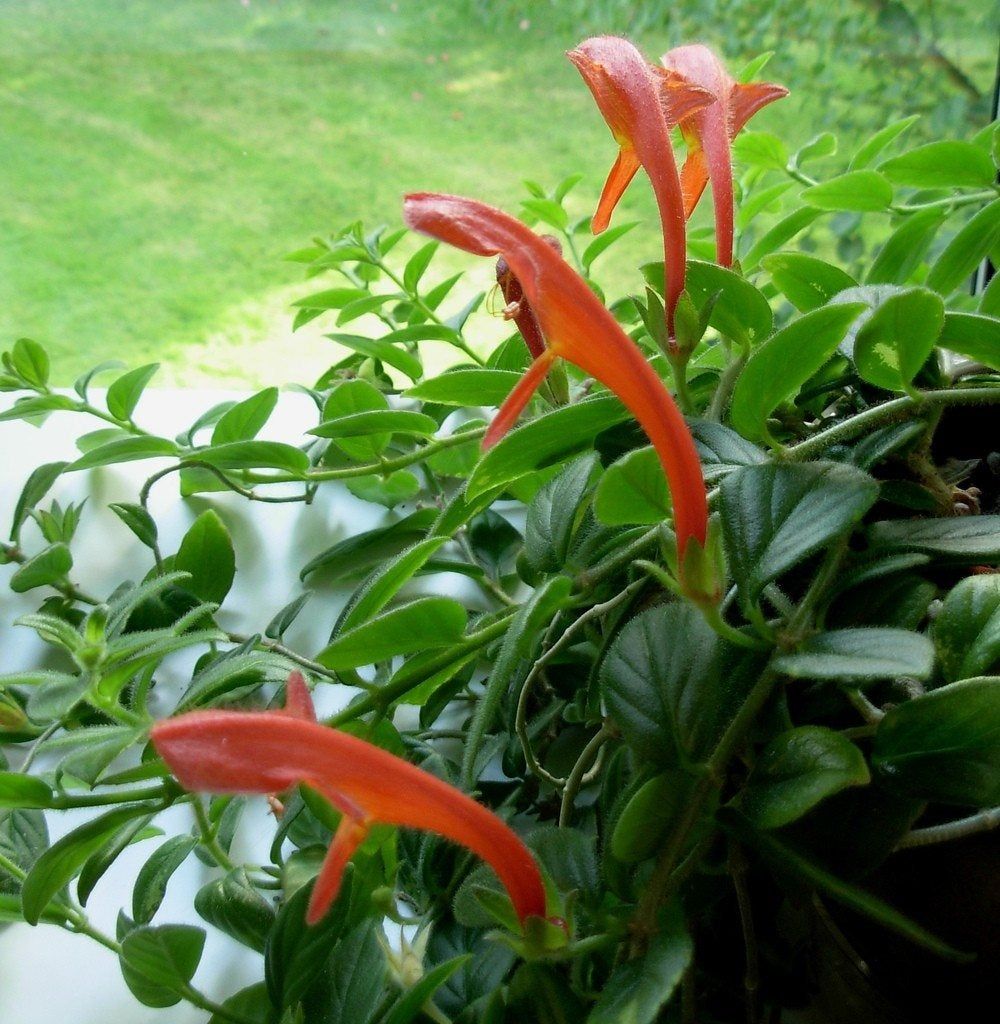The goldfish plant, scientifically known as Nematanthus gregarius, is a captivating tropical plant that has captured the hearts of plant enthusiasts worldwide. Its unique, goldfish-shaped blooms, which dangle gracefully from the plant, make it a truly eye-catching addition to any indoor garden.
Origin: Native to the rainforests of Brazil, the goldfish plant thrives in warm, humid environments.
Unique Bloom Shape
The plant’s most striking feature is undoubtedly its flowers. They resemble tiny goldfish, complete with a rounded body and a slender tail. The flowers can vary in color, ranging from vibrant orange to soft yellow.
Green, Leafy Foliage

The goldfish plant’s foliage is equally attractive. Its glossy, dark green leaves provide a beautiful contrast to the colorful blooms.
Light:
The goldfish plant prefers bright, indirect light. Avoid exposing it to direct sunlight, as this can scorch the leaves.
Keep the soil consistently moist, but avoid overwatering. Allow the top inch of soil to dry out slightly between waterings.
As a tropical plant, the goldfish plant thrives in high humidity. You can increase humidity by misting the plant regularly or placing it on a humidity tray.
The ideal temperature range for goldfish plants is between 65°F and 75°F (18°C to 24°C).
Fertilize your goldfish plant every two weeks during the growing season (spring and summer) with a balanced liquid fertilizer diluted to half strength.
Pests:
Mealybugs and spider mites are common pests that can infest goldfish plants. Treat these pests with insecticidal soap or neem oil.
Overwatering can lead to root rot. To prevent this, ensure proper drainage and avoid soggy soil.

Propagating a goldfish plant is relatively easy. You can propagate it through stem cuttings:
1. Cut a 4-6 inch stem tip.
2. Remove the lower leaves.
3. Dip the cut end in rooting hormone.
4. Plant the cutting in a pot filled with well-draining potting mix.
5. Keep the soil moist and the cutting in a warm, humid location.
6. Roots should develop within a few weeks.
The goldfish plant is a delightful addition to any indoor garden. With its unique blooms and relatively low-maintenance care requirements, it’s a great choice for both novice and experienced plant enthusiasts. By following the tips provided in this article, you can successfully cultivate and enjoy this beautiful plant.
:strip_icc()/100492384-ea9436b1bd3a424bb27597cb40904e5f.jpg)
1. Are goldfish plants toxic to pets?
Goldfish plants are generally considered non-toxic to cats and dogs. However, it’s always best to keep plants out of reach of pets to avoid accidental ingestion.
2. How often should I repot my goldfish plant?
Repot your goldfish plant every 1-2 years, or when the plant becomes root-bound. Choose a pot that is slightly larger than the current one.
3. Can goldfish plants bloom year-round?
While goldfish plants can bloom year-round under ideal conditions, they tend to flower more profusely in the spring and summer months.
4. Why is my goldfish plant not blooming?
Several factors can prevent goldfish plants from blooming, including insufficient light, low humidity, and improper fertilization. Ensure that your plant is receiving adequate light, humidity, and nutrients.
5. What is the best way to display a goldfish plant?
Goldfish plants look stunning in hanging baskets, where their cascading blooms can be fully appreciated. They can also be displayed on shelves or tabletops.


:strip_icc()/september-charm-japanese-anemone-273ca0fb-3511682d129e4f62833c2c183c2b1dd5.jpg?w=200&resize=200,112&ssl=1)
:max_bytes(150000):strip_icc()/alocasia-dragon-scale-2-2cd4495e57da49ea956b65db63656881.jpg?w=200&resize=200,112&ssl=1)


:max_bytes(150000):strip_icc()/GettyImages-1174305372-718fb182f53b4714bd0789d8a312d66f.jpg?w=200&resize=200,112&ssl=1)
